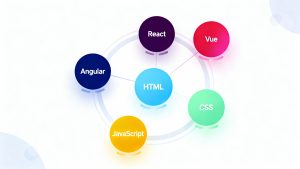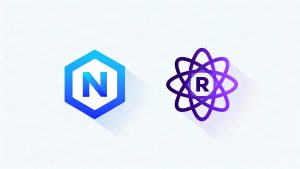Containers changed deployment from “works on my machine” to repeatable builds that run anywhere. For most engineers, the first encounter with containers is Docker. Podman appeared later as a drop-in alternative that tries to solve two long-standing complaints: the need for a daemon that runs as root and the security risks that follow. This article walks through podman vs docker from architecture to daily workflows, gives real configuration pointers, and closes with scenarios that show which tool fits which job.
Overview of Docker
Docker is still the default choice for many teams, so it helps to understand its moving parts before comparing it with Podman.
What is Docker?
Docker is a client-server platform that keeps a long-running service called the Docker Engine. The CLI sends requests over a Unix socket or TCP to that service. The engine supervises containers, networks, volumes, and build operations. Version 26.0 is the current Long-Term Support branch and continues the move toward smaller default images and rootless modes docs.docker.com.
Key features and benefits
- Full stack in one install: build, push, run, and compose are included.
- Layer cache: unchanged layers are reused so rebuilds are fast.
- Extensive ecosystem: Docker Desktop, Docker Compose, Hub, and Swarm along with IDE plugins for VS Code, JetBrains, and Eclipse.
- Rootless mode: added in Engine 20.10, stable in 26.x. Requires an unprivileged user, dockerd-rootless-setuptool.sh install, and a re-login.
- Registry integration: Docker Hub has official images but now limits unauthenticated pulls to 100 per six hours docs.docker.com.
Overview of Podman
Podman sets out to solve two pain points: running as a normal user and dropping the always-running daemon. A quick primer helps the later comparison make sense.
What is Podman?
Podman is an OCI compliant engine that runs every command as its own process. There is no central service so a crash in one container does not affect others. Podman 5.5.2 is the latest tagged build on GitHub github.com.
Key features and benefits
- Daemonless model: no always-running root process.
- Rootless by default: every user gets separate storage under $HOME/.local/share/containers.
- Systemd integration: podman generate systemd –new –files mycontainer writes unit files that autostart on boot.
- Modular toolkit:
- Buildah for image creation
- Skopeo for moving images across registries
- Podman for run, stop, checkpoint
- Security focus: SELinux labels are applied on each container and new CVEs are patched quickly. For example, CVE-2025-6032 was fixed a week after disclosure access.redhat.com.
- Desktop experience: Podman Desktop wraps the CLI in a GUI and works on Linux, macOS, and Windows using a lightweight VM podman.io.
Key Differences Between Podman and Docker
The table below highlights the architectural and operational gaps that most teams care about:
| Area | Docker | Podman |
| Service model | Central daemon (dockerd) | No daemon, fork-exec |
| Default privilege | Root process, rootless optional | Rootless default |
| Image build | Integrated docker build | Delegates to Buildah but podman build calls Buildah transparently |
| Compose equivalent | Docker Compose YAML, Swarm orchestration | Podman Compose, Quadlets, podman play kube |
| Systemd | Needs manual unit files or wrapper scripts | Auto-generate unit files with a single command |
| Windows/macOS | Full Desktop bundle with Kubernetes, requires 4 GB RAM minimum | Podman Desktop uses QEMU or WSL for a lighter VM |
| Licensing trend | Hub limits pulls for free tier | Apache 2.0, no rate limits or license tiers |
| Update cadence | Quarterly minor releases, well-documented release notes docs.docker.com | Faster minor bumps, security patches appear quickly github.com |
| Network defaults | Creates docker0 bridge, automatic iptables entries | Uses CNI plugins, iptables unchanged unless requested |
| Non-x86 support | Multi-arch images work but QEMU emulation required | Same, plus early preview for RISC-V because libpod is architecture-agnostic |
Performance numbers vary by hardware but most benchmarks show identical runtime speed and slightly faster cold start for Podman because nothing waits for the daemon socket.
Pros and Cons of Docker
Docker’s strengths and gaps become clear when you look at real operational tasks rather than benchmark numbers:
Pros
- One package gives you everything from build to swarm orchestration.
- Desktop integration is smooth for VPN-restricted corporate laptops.
- Years of Stack Overflow answers mean easier troubleshooting.
- Third-party monitoring such as Portainer and Datadog supports the Docker socket out of the box portainer.io.
Cons
- The daemon is a single point of failure. A segfault stops all containers.
- Running the daemon as root enlarges the attack surface.
- Pull limits on free Hub accounts complicate CI jobs that rely on public images docs.docker.com.
- Swarm is feature-frozen. Teams eventually migrate to Kubernetes anyway.
Pros and Cons of Podman
Podman trades a smaller ecosystem for security features and Linux-native tooling that some teams value more than convenience:
Pros
- No daemon means containers outlive the CLI and survive user logouts.
- Rootless setup is automatic which satisfies many CIS benchmarks without tweaks.
- Generates systemd units so ops teams can manage containers like native services.
- CLI matches Docker which reduces retraining time.
- Modular approach keeps the install small. Buildah and Skopeo update on their own cadence.
Cons
- Networking for rootless containers needs slirp4netns and cannot bind below port 1024 without workarounds.
- Some IDE plugins that depend on /var/run/docker.sock need extra configuration to talk to the Podman socket.
- Podman Compose supports 95 % of Docker Compose files but edge cases involving depends_on health-checks still fail.
- No direct replacement for Docker Hub’s “official images” badge, though Quay and GHCR are common alternatives.
Use Case Scenarios: When to Use Podman or Docker
The matrix that follows maps common situations to the engine that usually fits best:
| Situation | Pick | Why |
| Local development on Windows with heavy IDE integration | Docker | Docker Desktop integrates with VS Code’s remote containers extension, WSL2, and Kubernetes. |
| Hardened production server on RHEL 9 | Podman | Rootless default plus vendor support from Red Hat. |
| Edge device with 1 GB RAM and intermittent power | Podman | No idle daemon, lower memory footprint. |
| CI pipeline on GitLab Runner that already caches images | Docker | Existing shared runners expect the Docker socket and nested Podman adds complexity. |
| Internal analytics team using Jupyter images from Hub | Docker and local registry | Docker handles the pulls, a registry mirror avoids rate-limit hits. |
| Micro-service fleet under Kubernetes | Either | Both produce OCI images and Kubernetes uses containerd under the hood. The build tool choice does not affect runtime. |
| Single home lab host, needs systemd units for autostart | Podman | podman generate systemd is simpler than writing custom docker-compose.service files. |
Practical configuration snippets
The commands below solve three frequent questions that come up during migration tests:
- Bind privileged ports in rootless Podman
bash
sudo setcap cap_net_bind_service=+ep $(which podman)podman run -p 80:8080 nginx- Migrate images
bash
docker save myapp:latest | podman load- Generate compose-like units
bash
podman generate systemd --files --name websystemctl --user enable container-web.serviceConclusion
Choosing between docker vs podman is less about raw performance and more about operational fit. Docker still wins on cross-platform polish, built-in tooling, and a huge ecosystem of guides. Podman shines when you need rootless isolation, systemd integration, or a daemonless model that aligns with traditional Unix service management. Most teams end up using both: Docker on developer laptops for its convenience and Podman in production where security and resource isolation carry more weight.
Start with a small pilot: alias docker=podman on a staging box, move one service, and monitor the differences. Measure memory use, build speed, and incident recovery. With real data in hand the decision about podman vs docker will be clear for your environment.



